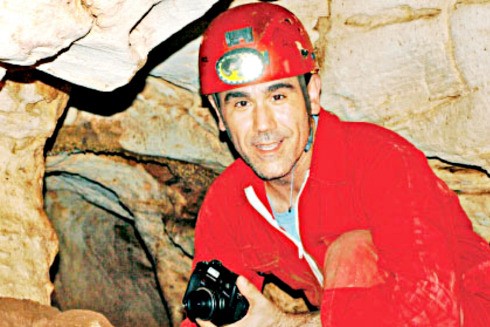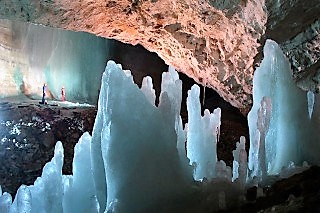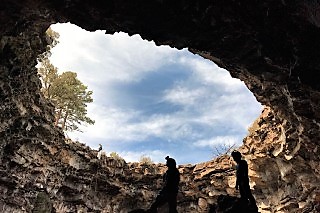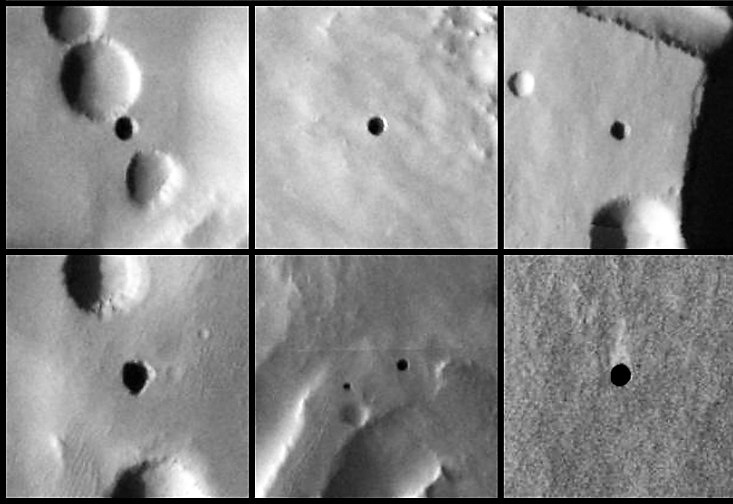Joining with scientists around the world and NASA researchers, the team calls for a new focus on exploration of caves on the moon, Mars and beyond.
TAMPA - USF School of Geosciences Professor Bogdan P. Onac documents millions of years of Earth’s natural history by exploring caves and lava tubes around the world. But now Onac along with dozens of fellow geoscientists, astronomers, astrobiologists, and robotics and artificial intelligence engineers are urging a new focus on caves on other planets as sites of untold discovery.

USF Professor Bogdan Onac
In a newly published letter in Nature Astronomy, the international team of researchers say caves on the moon and Mars – and eventually other planets too – are logical sources of planetary history that could give unparalleled insight into the development of the solar system, including if forms of life have existed there. The scientists and engineers noted that 2021 is the International Year of Caves and Karst and a unique moment to embrace a challenge that’s become increasingly possible with technological advancements.
Given what scientists have learned about Earth’s history through exploring beneath the ground, allowing humans to explore more thoroughly into the caves of the moon and Mars likely will generate knowledge that goes well beyond surface exploration.
“We wish to emphasize the vast potential embodied in planetary subsurfaces,” wrote the researchers, who hail from 27 separate institutions around the world including the NASA’s Jet Propulsion Laboratory in Pasadena, California, and Ames Research Center in Silicon Valley. “Caves are important because they provide records of a planetary body's history. On Mars, this may include evidence of past or even present microbial life. For the Moon and Mars, caves could protect human explorers from the harmful and inhospitable surface environment.”

USF Professor Bogdan Onac explored Scărișoara Ice Cave's formations and underground glaciers in research on climate patterns.
Onac’s exploration of caves in Romania, on the Mediterranean Island of Mallorca, and into New Mexico’s lava tubes have produced new discoveries of Earth’s sea levels and climate from millions of years ago. He said planetary caves are likely to yield equally valuable new knowledge and insights.
“For a geologist, and especially a cave scientist, there are many open questions regarding extraterrestrial caves,” he said.
“One that has deep implications for future potential human exploration or settlement is the presence of water, which like on Earth, could be in the form of ice deposits preserved in deep descending lava tubes. Caves may have formed, for example, in polar ice caps or in the solid carbon dioxide on Mars. And although we have plenty of information on the stability of glacier caves on Earth, we know nothing about this issue for caves on other planetary bodies.”
Another interesting question, Onac added, is what kind of minerals are present in planetary caves and whether their precipitation was mediated by microorganisms, a topic that has direct implications in the search for life on other planets?
In their letter, the researchers note that previous missions to the moon and Mars have already identified hundreds of cave entrances that allow scientists to begin developing concepts for future cave exploration missions. Researchers have cataloged 2,645 subsurface access points on eight planets other than Earth, they wrote.

A USF research team descends into a lava tube in the El Malpais National Monument in New Mexico.
On Earth, cave entrances are identified visually, by technologies capable of detecting thermal heat, and through Light Detection and Ranging (LiDAR), a remote sensing technology. These technologies and strategies can be used on other planets, especially if combined by with the use of orbiting spacecraft equipped with sensors capable of identifying subsurface features, they said.
The opportunity to explore caves on other planets is coming sooner than many realize. NASA’s Ingenuity helicopter, which landed earlier this year on Mars, and the space agency’s Dragonfly mission to Titan, Saturn’s largest moon (launching in 2026 and arriving in 2034), could be used to scientifically confirm subsurface access points for future cave research missions, the authors noted.
“Resulting mapped cave architectures and hazards will inform mission planning and help reduce mission risk,” they wrote.
In the meantime, investment is needed in robotic, artificial intelligence and autonomous vehicle research and development programs to advance the technology needed to explore within in the caves is need. Concepts for the explorer robots include limbed robots, flying robot swarms, microbot swarms and rovers.
Read the letter in Nature Astronomy.
